Easy-to-make kimchi
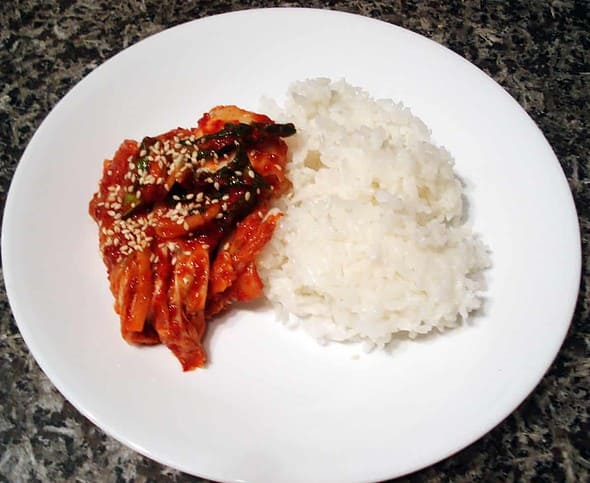
Ingredients
Baechu (napa cabbage 10 pounds), salt, sweet rice flour, sugar, water, garlic, ginger, onion, fish sauce, squid, hot pepper flakes, leek, green onions, carrot, radish.Directions
- Trim the discolored outer leaves of 10 pounds of napa cabbage.
- Cut the cabbage lengthwise into quarters and remove the cores. Chop it up into bite size pieces.
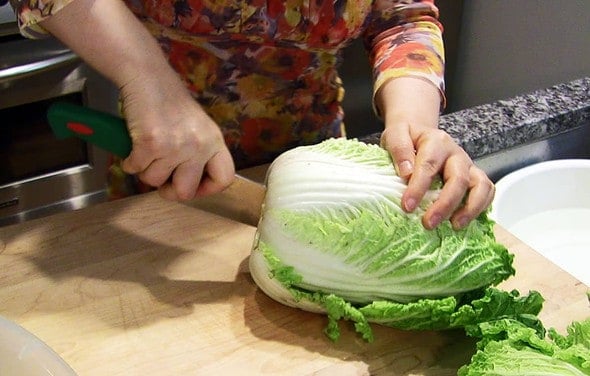
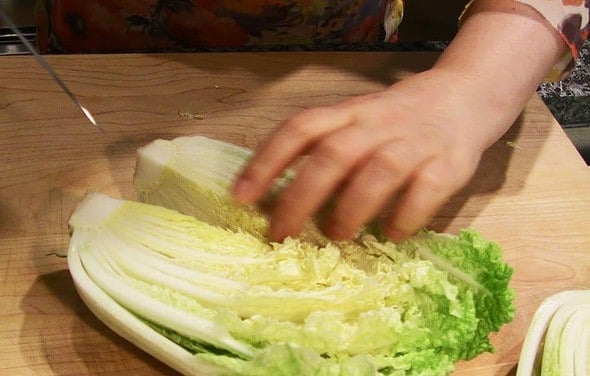
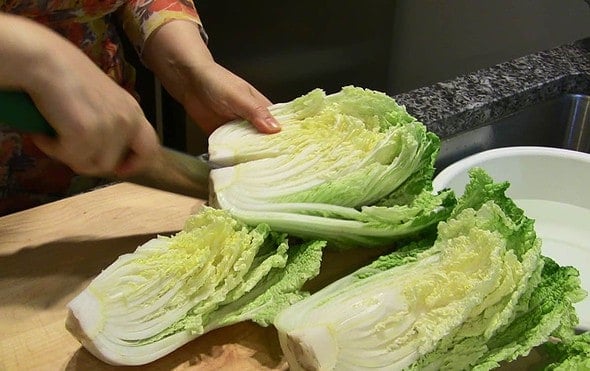
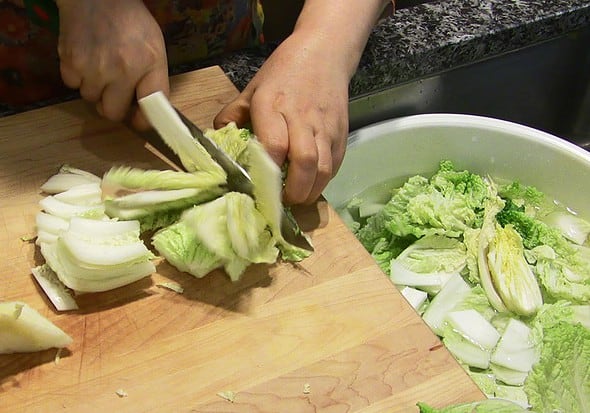
- Soak the pieces of cabbage in cold water and put the soaked cabbage into a large basin. Sprinkle salt.
*tip: 1 cup of salt will be used for 10 pounds of napa cabbage
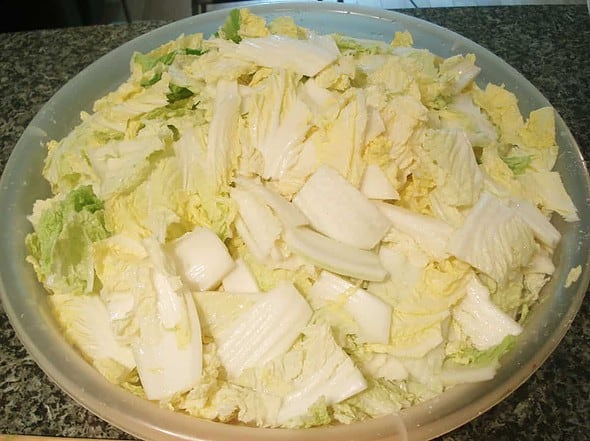
- Every 30 minutes, turn the cabbage over to salt evenly (total salting time will be 1½ hours).
- 1½ hours later, rinse the cabbage in cold water 3 times to clean it thoroughly.

- Drain the cabbage and set aside.
- Put 3 cups of water and ½ cup sweet rice flour (chapssal garu) in a pot and mix it well and bring to a boil. Keep stirring until the porridge makes bubbles (about 5 minutes).
- Add ¼ cup sugar. Stir and cook for a few more mintues until it’s translucent.
- Cool it down.
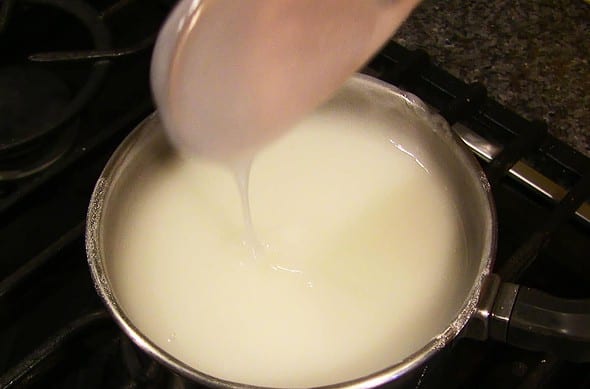
- Place the cold porridge into a large bowl. Now you will add all your ingredients one by one.
- Add 1 cup of fish sauce, 2.5 cups of hot pepper flakes (depending on
your taste), 1 cup of crushed garlic, 1-2 tbs of minced ginger, 1 cup
amount of minced onion.
*tip: much easier to use a food processor.
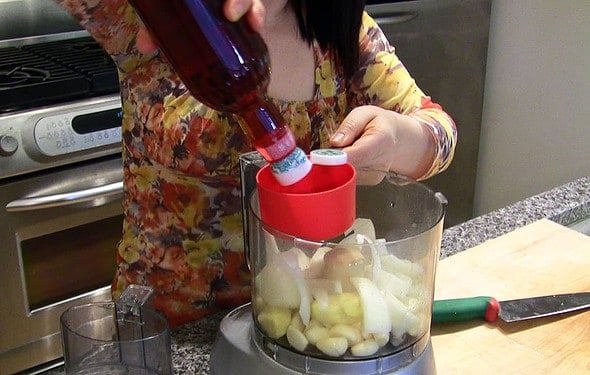
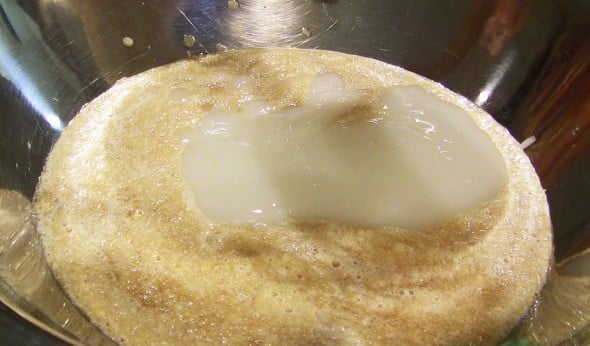
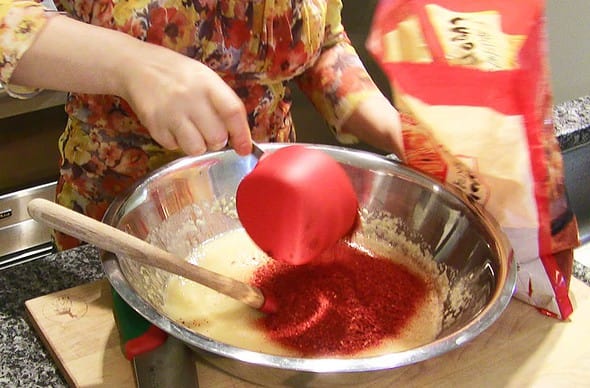
- Wash and drain the salty squid. Chop it up and add it to the kimchi paste.
*tip: how to prepare salty squid is posted on the FAQ above!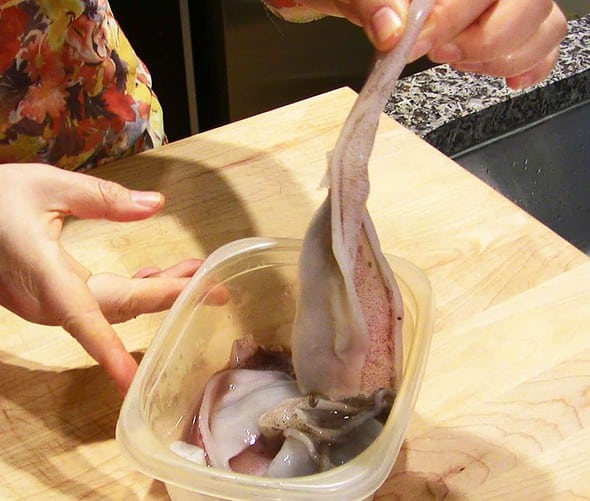
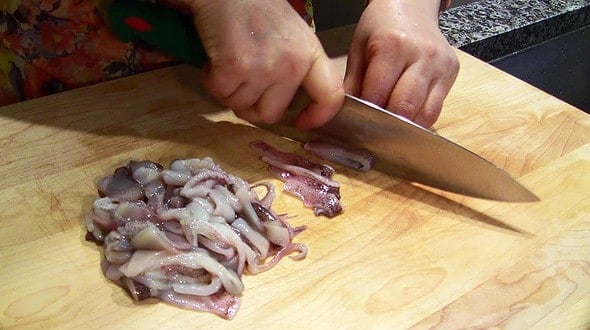
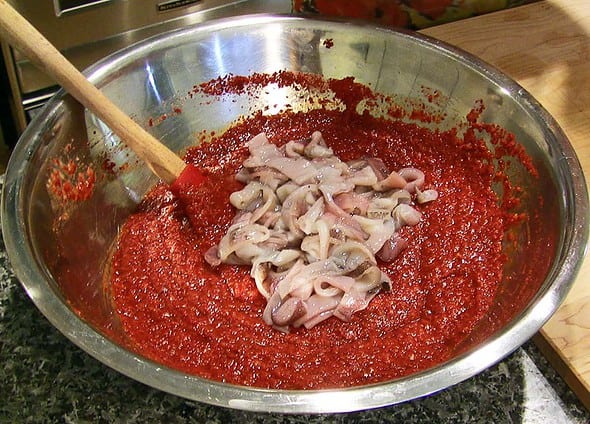
- Add 10 diagonally-sliced green onions, 2 cups amount of chopped
leek, 2 cups of julienned Korean radish, and ¼ cup of julienned carrot.
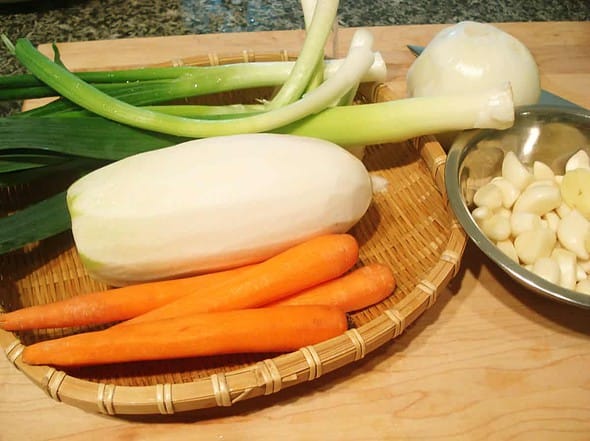
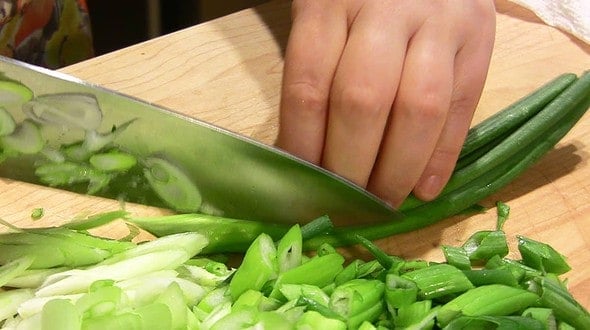
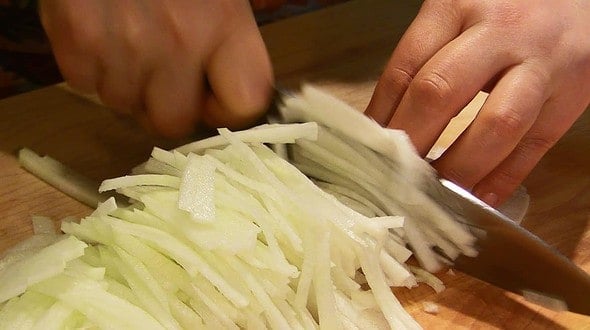
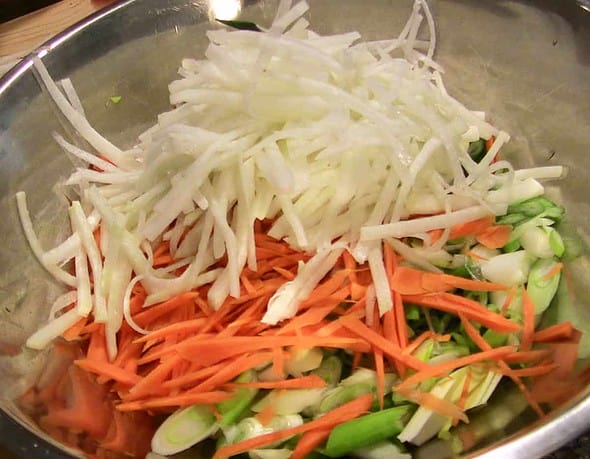
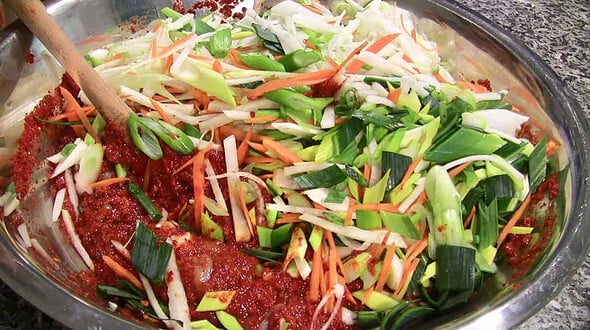
- Mix all ingredients well and your kimchi paste is done.
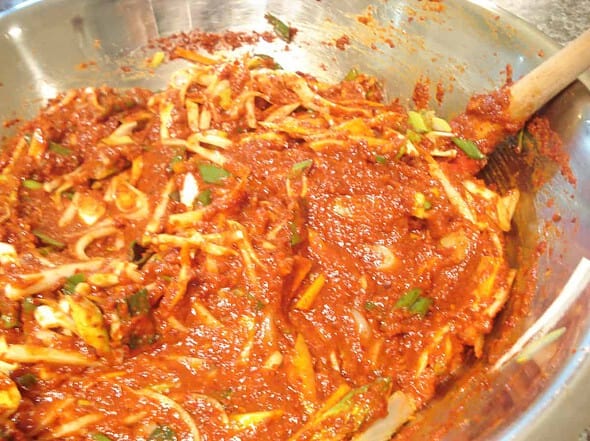
- Put the kimchi paste in a large basin and add all the cabbage. Mix it by hand.
*tip: If your basin is not large enough to mix all the ingredients at once, do it bit by bit.
- Put the kimchi into an air-tight sealed plastic container or glass jar.
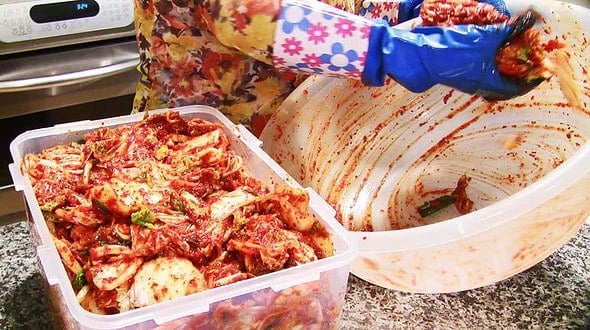
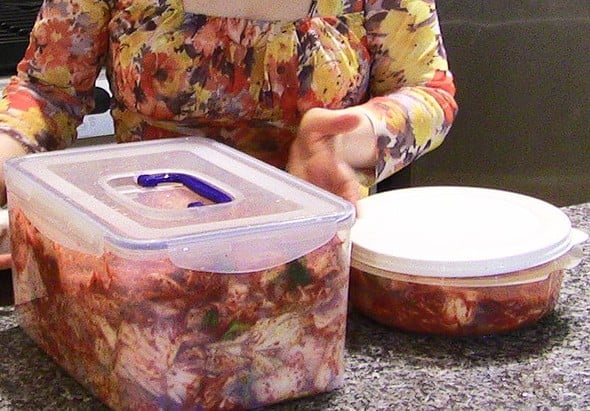 You can eat it fresh right after making or wait until it’s fermented.
You can eat it fresh right after making or wait until it’s fermented.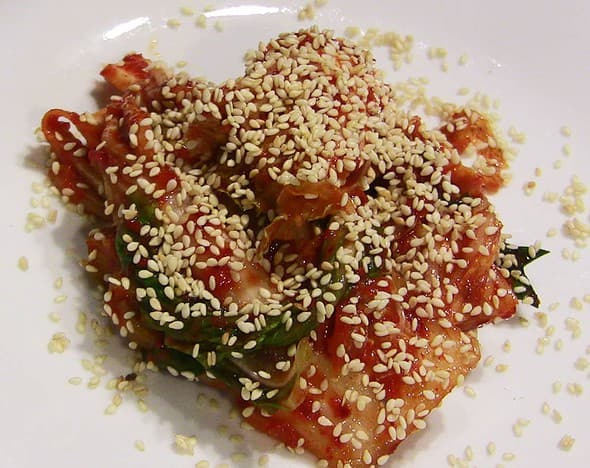

How do you know it’s fermented or not?
One or 2 days after, open the lid of the Kimchi container. You may see some bubbles with lots of liquids, or maybe sour smells. That means it’s already being fermented.
أترك تعليقًا